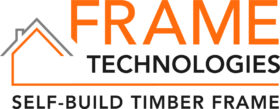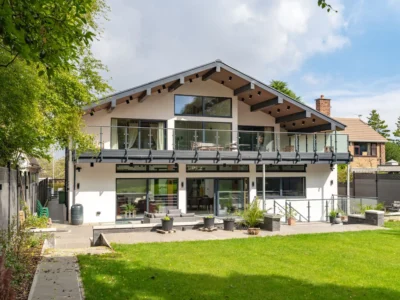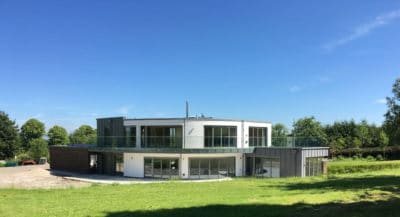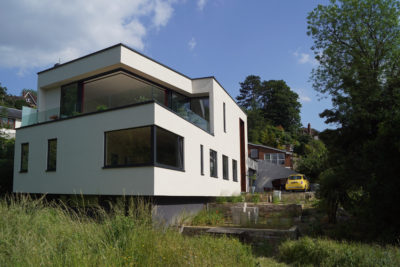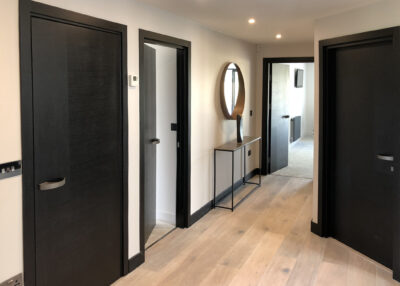Discover Innovations in Timber Frame Technology
Timber frame has long been a popular system among self builders. Its speed of construction, quality, and thermal and sustainable benefits make it an excellent option. Plus, as it offers a complete build solution – providing all the walls, floors and roof with one engineer and one point of contact – it gives much better programme certainty and cost control.
Timber has always been at the forefront of the self build industry on a technical level. Once upon a time, it was deemed more expensive. But what many people didn’t take into consideration was that, while the initial outlay may have been higher, it saved costs further down the line.
Now that Building Regs have improved to require lower U-values (a measure of thermal conductivity), it’s clear that timber frame is a great value build solution, as it is naturally airtight and offers excellent thermal performance.
Self builders are pushing the boundaries further and further to create wow-factor, low-energy homes. This is easier to achieve with timber frame and, as the house shell is manufactured in a factory, the value is guaranteed.
Timber trends
Over the course of this unprecedented year, we’ve seen an increase in people looking to create healthy homes and make use of natural insulation. While this has always been of interest, the products needed to realise it are now more readily available, which is fuelling demand.
For instance, it’s possible to produce breathable timber frame wall panels using glasswool or natural insulations and still achieve incredible energy performance. The latest twin stud systems can achieve U-values down to 0.1 W/m2k, although this does require an increased wall thickness.
Another emerging route is modular building. This approach is moving quickly with developers operating in the volume market, but looks less likely to gain traction among self builders. That’s down to the more bespoke nature of creating one-off homes, which can make it difficult for modular to compete in terms of value for money.
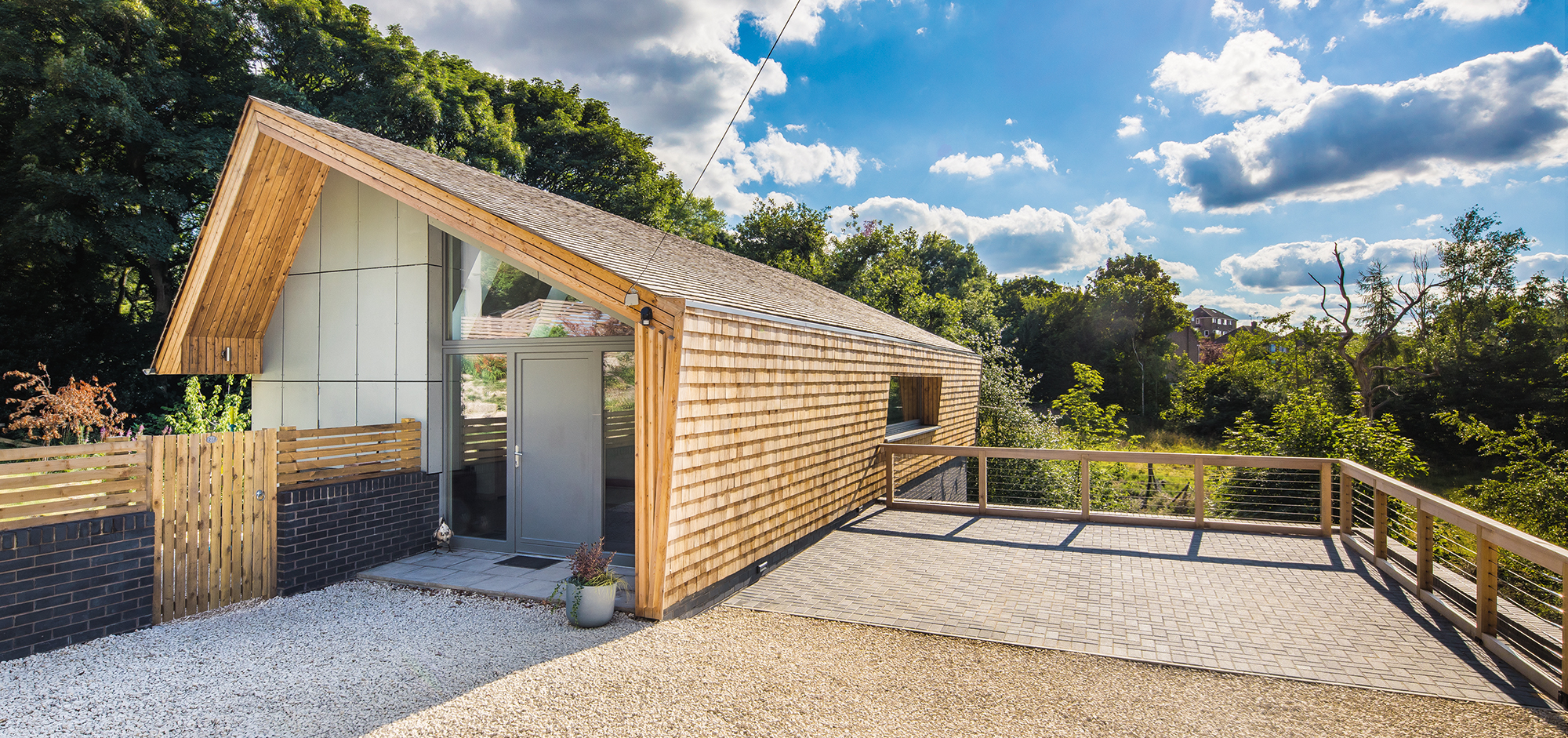
Winner of the 2019 Build It Award for Best Timber Frame Home, this Passivhaus project by Frame Technologies features an offsite-manufactured timber system, enabling construction on a tricky sloping plot
Elsewhere, the use of CLT (cross laminated timber) is slowly increasing among self builders. It can enable some impressive architectural opportunities, but its cost means it will always be limited to high-value, design-led projects. By contrast, another engineered product – glulam – is quickly becoming a go-to option for structural works. Glulam is often specified in preference to steelwork for beams and posts. It’s a fantastic option for features such as fully vaulted ceilings.
Maximising potential
A big focus for many self builders is achieving better value and control costs. A key way to manage this is to decide on your construction system and manufacturer at an early stage – ideally as soon as possible once you’ve secured funding and obtained planning permission.
Most manufacturers offer in-house design packages for the timber frame, so they can provide useful early input. Often, they can advise on buildability – leading to better value and a quicker, smoother process on site – as well as the latest materials and technology that might suit your plans.
Timber frame suppliers are getting more and more involved with design, insulation packages, windows and doors, and even foundations. This helps the self builder get better value and cost certainty, as well as improved quality.
Fire safety has been a major consideration for all forms of construction for a very long time, but is understandably under even greater scrutiny at the moment. The Structural Timber Association (STA) has undertaken many rounds of stringent fire testing in controlled conditions to really understand the situation and inform the industry. STA members must now register every project for assessment at the quotation stage – which is one of the many reasons why self builders should only use an STA member to design, manufacture and erect their new home.
What’s next in timber construction?
Looking forward to the next 5-10 years, we’re likely to see an increase in prefabrication, with offsite and factory build timber homes becoming the norm. Time onsite is expensive and weather dependent, so the more that can be done in controlled factory conditions, the better. When you can build pretty much any design in most locations to a fixed budget and timescale, why would you use anything else?
| Simon Orrells is the managing director of Frame Technologies and has over two decades’ experience in self build timber frame construction. Frame Technologies offers a flexible range of timber services to cover full supply and erect or supply only packages. Call 01544 267124 for more information. |
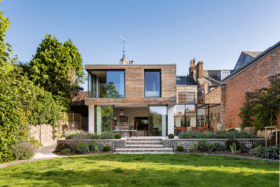
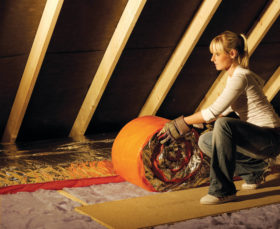















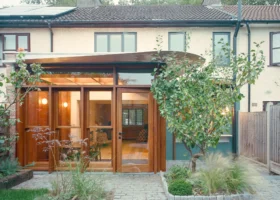















































































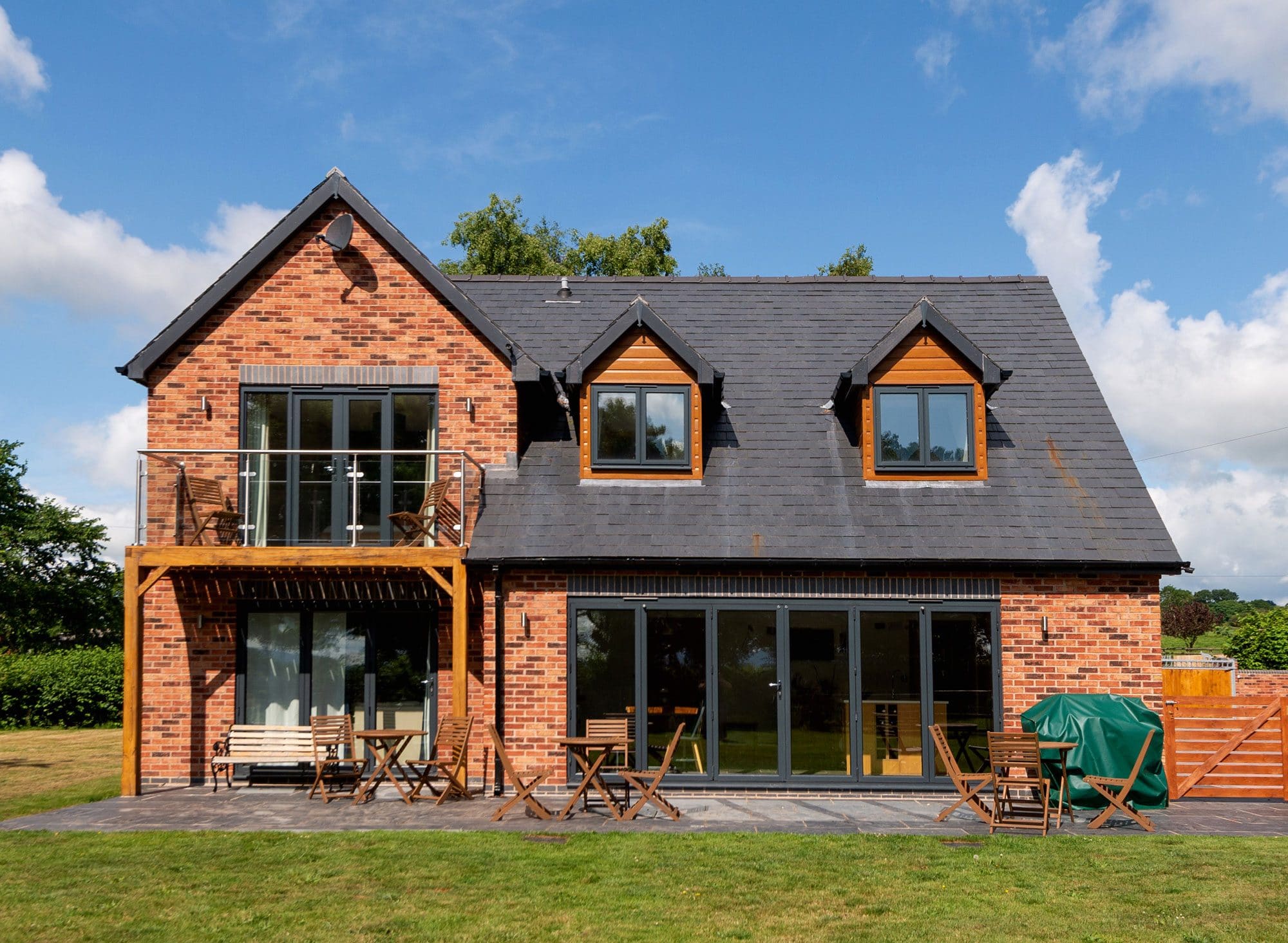
 Login/register to save Article for later
Login/register to save Article for later
